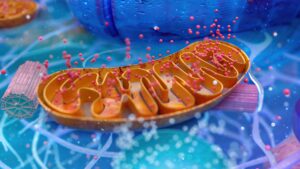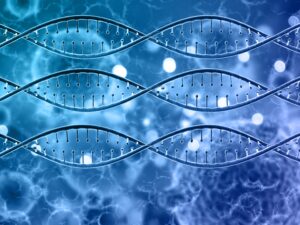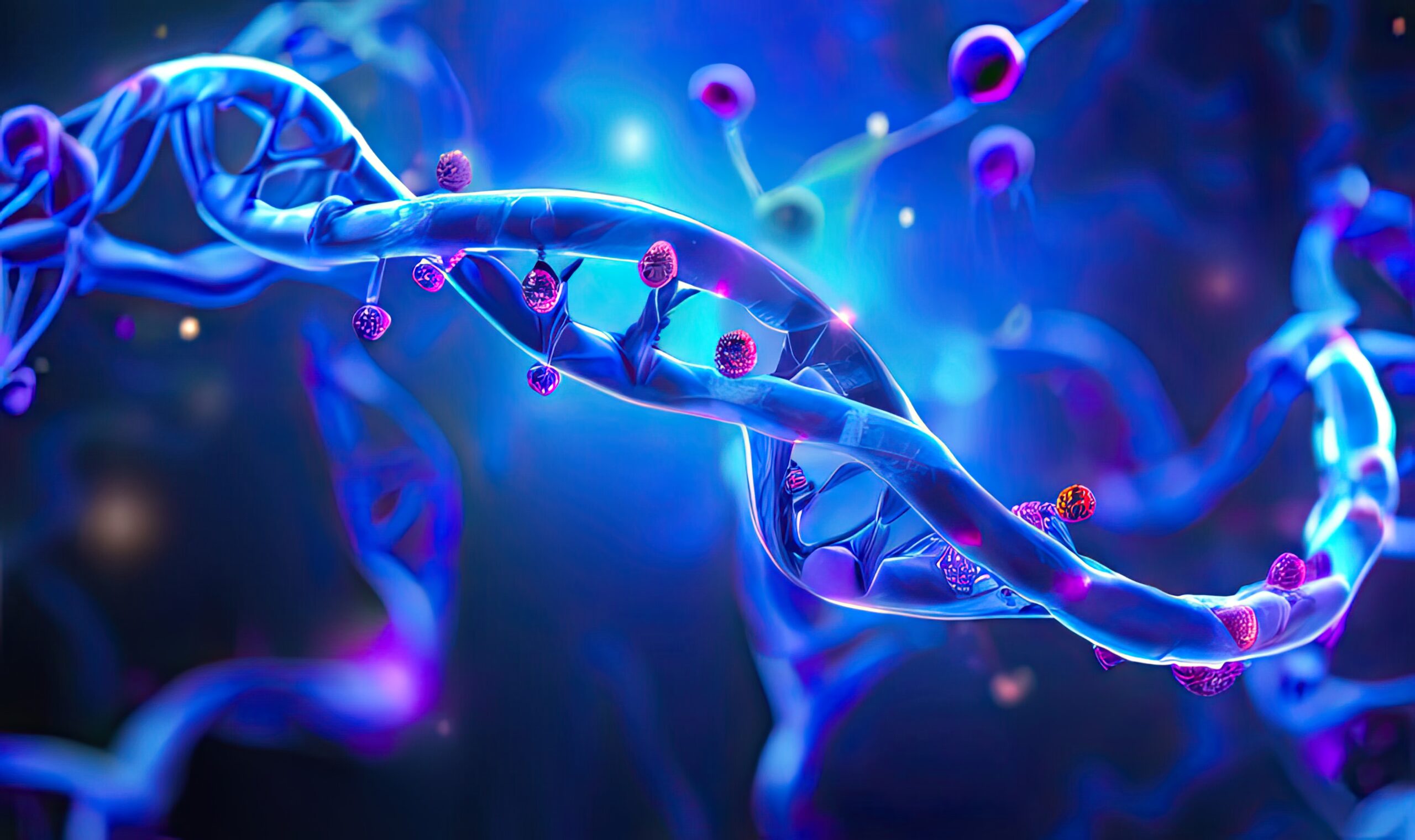Biomolecules exhibit different chemical and physical characteristics and respond distinctly to stimuli-responses from the environment and hence understanding the structure and chemistry of biomolecules in solution, solid-state and at the interface is crucial. Lets understand biomolecule stimulation in detail.
What is the significance of understanding biomolecules to human lives?
Biomolecules are vital for life as it aids organisms to grow, sustain, and reproduce. They are involved in building organisms from single cells to complex living beings like humans, by interacting with each other. The diversity in their shape and structure provides diversity in their functions.
Four Major Types of Biomolecules
Approximately 10,000 to 100,000 molecules are present in a cell to regulate bodily function. But the four major types of biomolecules include carbohydrates, lipids, nucleic acids, and proteins. Most of the other compounds are derivatives of these major primary compounds.
Every biomolecule has its characteristics and is designated to perform some specific function essential for life. So, let’s see what they are all about!!!
-
Carbohydrates
Carbohydrates are a vital part of a healthy diet. They provide the energy required to do work. Scientifically, it’s a polyhydroxy aldehyde or polyhydroxy ketone. Carbohydrates are the most abundant biomolecules on earth.
 Types of Carbohydrates and Their Functions
Types of Carbohydrates and Their Functions
Depending on the number of products formed after hydrolysis, carbohydrates are classified into three groups.
- Monosaccharides: These are composed of a single unit of polyhydroxy aldehyde or ketone. Monosaccharides are colorless, crystalline solids that are completely soluble in water. They are involved in generating energy for the body. Examples include glucose, fructose, ribose, and arabinose.
- Disaccharides: These are composed of two units of sugars joined by O-glycosidic bonds. A list of disaccharides with their monomer units and functions is given below.
- Polysaccharides: These consist of more than two sugar monomer units. They are also known as glycans. They are of two types:
- Homopolysaccharides: They are composed of only a single type of sugar unit. Based on the function they perform, homopolysaccharides are classified into two groups:
- Structural polysaccharides: They provide mechanical stability to cells, organs, and organisms. Examples are chitin and cellulose. Chitin is involved in the construction of a fungal cell wall, while cellulose is an important constituent of the diet for ruminants.
- Storage polysaccharides: They serve as carbohydrate stores that release sugar monomers when required by the body. Examples include starch, glycogen, and inulin. Starch stores energy for plants. In animals, it is catalyzed by the enzyme amylase (found in saliva) to fulfill the energy requirement. Glycogen is a polysaccharide food reserve of animals, bacteria, and fungi.
- Heteropolysaccharides: They contain two or more different types of sugar units. It includes glycosaminoglycans like hyaluronic acid, heparan sulfate, keratan sulfate, and murein. These polysaccharides have diverse functions. For example, heparin is an anticoagulant (prevents blood clotting, it’s also known as blood thinners), hyaluronic acid is a shock absorber and lubricant, while peptidoglycans or mureins are present in the bacterial cell wall.
- Homopolysaccharides: They are composed of only a single type of sugar unit. Based on the function they perform, homopolysaccharides are classified into two groups:
Nucleic Acids
Nucleic acids are macromolecules present in cells and viruses, and they are involved in the storage and transfer of genetic information. The nucleic acid was first discovered by Friedrich Miescher in the nuclei of leukocytes. Later, further studies showed that it’s a mixture of basic proteins and phosphorus-containing organic acid.
Structurally, nucleic acids are polymers of nucleotides (or polynucleotides) which are phosphate esters of nucleosides. The nucleotides are comprised of three components:
- Nitrogenous base: These are heterocyclic, planar, and aromatic molecules. It is of two types: purines and pyrimidines. Purines include adenine and guanine, both of which are found in both DNA and RNA. Pyrimidines include thymine (found only in DNA), cytosine (found in both DNA and RNA), and uracil (found only in RNA).
- Five carbon sugar: The two types of pentose sugar are ribose (present only in RNA) and deoxyribose (present in DNA). These sugars in nucleic acids have the D-stereoisomeric configuration.
- Phosphoric acid ion: It’s a phosphate group involved in the polymerization of the nucleotides. A phosphodiester bond links two or more nucleotides leading to the formation of polynucleotides.
Types of Nucleic Acids and Their Functions
Based on nature, structure, and function, the nucleic acids are categorized into two groups: Deoxyribonucleic acids (DNA) and Ribonucleic acids (RNA).
a. Deoxyribonucleic acids (DNA)
DNAs are the hereditary material that resides inside the nucleus. In 1953, the first structure of DNA double helix (B-form of DNA) was discovered by Watson and Crick. DNA has two other forms as well, A and Z forms. The conformation DNA will adopt depends on the hydration level, DNA sequence, chemical modification of the bases, the type, and concentration of a metal ion in the solution.
The double helix structure represents two polynucleotides DNA coiled around a central helix. The two strands are antiparallel and interact by hydrogen bonds between complementary base pairs. In some cases, like at low pH, the triple helix form of DNA also exists. It’s formed by laying a third strand into the major groove of the DNA.
It is the genetic material that stores all the information required to be transferred to the progeny. It specifies the biological development of all living organisms and viruses.
Do you know? It is believed that, around 4 billion years ago, RNA was the first genetic material! Scientists say it is largely because of its self-replicating ability and enzymatic activity. This hypothetical period is known as the RNA world. But when the protein-forming enzymes came into existence, DNA became the most dominating and stable form of genetic material. The DNA structure is more stable than RNA because of the absence of a 2’ hydroxyl group. The other advantage DNA has is that its double-stranded structure allows for the correction of mutations as well.
b. Ribonucleic acids (RNA)
RNA is present in all living cells. It has different roles to play in different organisms. It acts as genetic material in some viruses and has enzymatic activity in other organisms (where it is called ribozyme). Three types of RNA are present among organisms: rRNA, mRNA, and tRNA. All three have essential roles in the development and maintenance of life.
The importance of RNA and DNA is incomparable. DNA carrying the genetic information can’t leave its home, the nucleus, and this is why RNA exists. They are involved in the transfer of genetic information for protein synthesis via the processes of transcription and translation (outside the nucleus), and they control gene expression as well.
Structurally, RNA exists in both single-stranded (primary structure) and double-stranded (secondary structure) forms. The double-helical structure of RNA is present in the A form.
Do you know?RNA duplexes are more stable than DNA duplexes. At physiological pH, RNA duplexes require a higher temperature for denaturation than DNA duplexes. Though, the physical basis for this difference is still a mystery. The DNA structure is more stable than RNA because of the absence of a 2’ hydroxyl group. The other advantage DNA has is that its double-stranded structure allows for the correction of mutations as well.
4. Lipids
Lipids are organic compounds that are insoluble or poorly soluble in water but soluble in organic solvents (like dissolves like) such as ether, benzene, or chloroform.
They are hydrophobic and structurally composed of a chain of hydrocarbons. They are chemically more diverse than other biomolecules, and they are primarily involved in membrane structure and energy storage.
 Classes of Lipids and Their Functions
Classes of Lipids and Their Functions
Different classes of lipids include:
- Fatty acids: These are the simplest forms of lipids. They are composed of hydrocarbon chains of 4-36 carbons and one acidic group. They can be linear or branched. Moreover, fatty acids are the building blocks of other types of lipids.
- Waxes: These are esters of fatty acids and long-chain alcohols. They are composed of hydrocarbon chains of 14-36 carbons. They are synthesized by many plants and animals. However, the best-known wax is bee wax which is composed of an ester of palmitic acid with triacontanol alcohol.
- Phospholipids: These are composed of fatty acids, an attachment platform for fatty acids, a phosphate, and an alcohol attached to phosphate. They are part of the cell membrane of the organisms.
- Glycolipids: These are lipids containing saccharide groups. They are constituents of the cell membrane and are involved in signal transductions.
- Steroids: These are complex derivatives of triterpenes. For example, cholesterol is a constituent of the cell membrane and acts as a precursor for the biosynthesis of steroid hormones and bile acids.
- Eicosanoids: They arise from the 20 carbons of polyunsaturated fatty acids. They perform several functions. For example, prostaglandins stimulate uterine contraction and lower blood pressure, leukotrienes are involved in chemotaxis and inflammation, and thromboxanes act as vasoconstrictors and stimulate platelet aggregation.
Other than these lipid molecules, some plasma lipoproteins also exist that are structurally a lipid-protein complex. These complexes function as lipid transport systems in blood. Some examples of lipoproteins are chylomicrons, low-density lipoproteins, and high-density lipoproteins.







